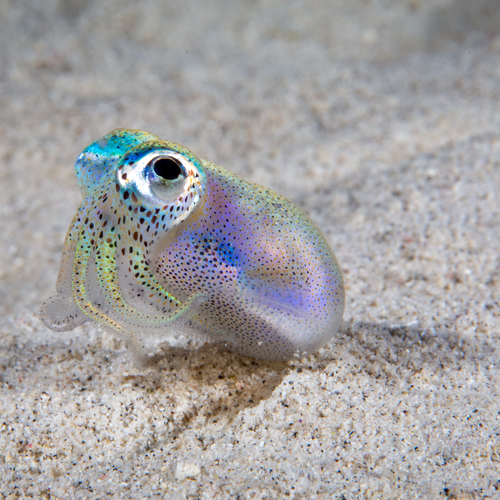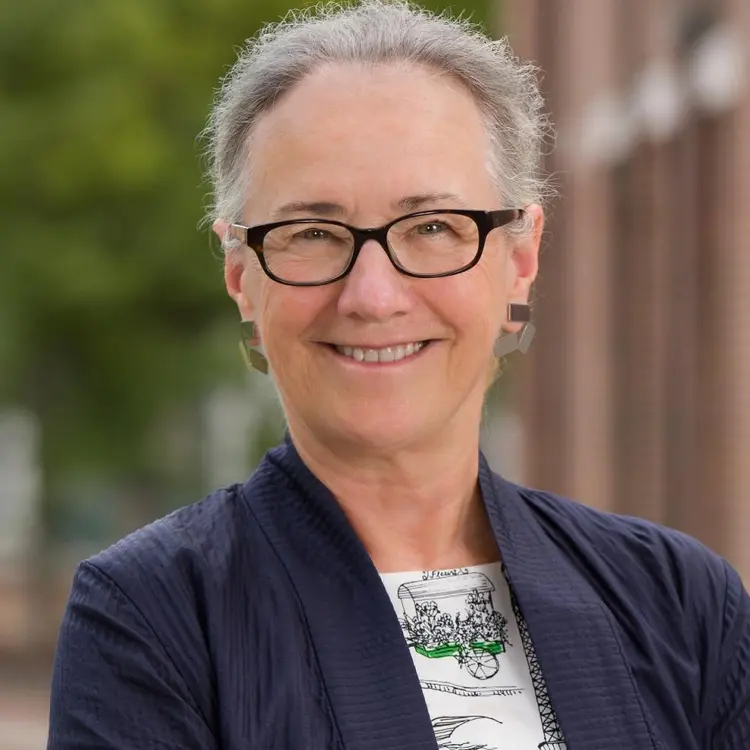Overview
McFall-Ngai joined the institution in January, 2022, from the University of Hawai‘i at Mānoa, where she was a professor at the Pacific Biosciences Research Center’s Kewalo Marine Laboratory and the center’s director emerita.
Much of her work has concerned the relationship between the bobtail squid and the luminescent bacterium Vibrio fischeri, which colonizes the nocturnal cephalopod and allows it to camouflage itself by Moon- and starlight to hunt and escape predators. Using this association as a model, she has been able to elucidate many details about how the microbiome shapes various aspects of animal life, including development and longevity.
McFall-Ngai was a Guggenheim Fellow in 2010, a Caltech Moore Scholar between 2011 and 2013, and an Andrew D. White Professor-at-Large at Cornell University between 2010 and 2016. She is a member of the National Academy of Sciences, the American Academy of Arts and Sciences, and the American Academy of Microbiology.
She received her undergraduate degree in biology from the University of San Francisco and her Ph.D. in the same from UCLA.
Research Interests
McFall-Ngai's research program has combined training experiences in both organismal and molecular biology to develop two major focuses:
- 1) host-bacterial symbiosis; and,
- 2) the 'design' of tissues that interact with light.
The experimental strategy for both areas of research relies on methods that have been developed for the study of the squid-vibrio association over the past 20 years.
In addition, she has a continuing interest in the history and development of the field of microbial symbiosis and its impact on biology; a focused effort in this area promises to drive an unprecedented integration across biology as a whole. Such integration will revolutionize the way we think about all aspects of the biosphere.

Major Questions
-
With each generation, how does the animal harvest the often rare symbiont from the environment upon birth or hatching?
-
How do the host and symbiont recognize one another?
-
How does the bacterial partner influence the developmental program of the host?
-
How is stability achieved and maintained in the mature association?
-
What are the principal differences between how an animal interacts with pathogenic bacterial species and beneficial ones?
CV
- Doctor Honoris Causa, Ecole Polytechnique Federale de Lausanne, Switzerland (2015)
- Elected Member, National Academy of Science, 2014; Speaker at Induction Ceremony (April 2015)
- Elected Member, American Academy of Arts and Sciences, 2012; Speaker for Section II, Induction Ceremony EU Marie Curie Fellowship (2011-2016)
- John Simon Guggenheim Fellowship, 2009-2010
- Finalist, International Prize (Japan), 2010
- U San Francisco, Arthur Furst Distinguished Research Award 2008
- Elected Chair, Rhodes Scholar Committee, State of Hawaii 2002-2004
- U Hawaii, 2002 Regent’s Medal for Excellence in Research
- Elected to the American Academy of Microbiology, 2002
- Paul Illg Distinguished Lecturer 2002,
- Friday Harbor Laboratories, Miescher-Ishida Prize 1999/2000, for contributions to symbiosis–International Society Endocytobiology
- Albert S Raubenheimer Outstanding Junior Faculty Award - Letters, Arts and Sciences, USC, 1994
- University of California President's Fellow, 1986-1988
- NIH National Research Service Award, 1985-1986
- Fleming Fellow of Jules Stein Eye Institute, UCLA 1984-1986
- Allergan Fellow, 1984-1985
- UCLA Graduate Woman of the Year, 1983
- Dwight D Davis Award for Best Paper, Vertebrate Morphology Section, American Society of Zoologists, 1983
- The Otto Scherbaum Award for Outstanding Research by a Graduate Student, Dept of Biology, UCLA, 1983
- AM Schechtman Award for Outstanding Teaching Assistant, Dept of Biology, UCLA, 1979-1980
- American Society for Microbiology;
- Society for Developmental Biology;
- Society for Integrative and Comparative Biology;
- Sigma Xi;
- American Association for the Advancement of Science
- Advisory Board, National Science Foundation, Biology Directorate, Jan 2015-Dec 2016
- Board of Governors, Amer Acad Microbiology, July 2014-July 2017
- NIH, External Review Panel, Human Microbiome Project, Evaluation 2016/2017
- Scientific Advisory Board, Chair, Human Microbiome and Anthropology, CIFAR, U British Columbia (2014-current)
- Harvard Visiting Committee, Department of Organismic and Evolutionary Biology, Harvard U (2013- present)
- External Advisory Board, Host/Microbiome Initiative, University of Michigan (2013-current)
- President's Advisory Board, Christian-Albrechts University-Kiel, (2009-present)
- External Advisory Board, Collaborative Research Centre, German Res, Fdn, “Origin and Function of Metaorganisms”, (2015-2019)
- Member, Forum on Microbial Threats, Institute of Medicine, National Academy of Sciences (current)
- Scientific Advisory Board, Global Health Institute, EPFL, Lausanne, Switzerland (current)
- Selection committee, Daniel Jouvance Award, French Academy of Sciences, (current)
- Discussant – ASM Blog: ‘This Week in Microbiology (TWiM)’
- Scientific Advisor, Symbiomics, Molecular Ecol/Evol of Bacterial Symbionts (training grant), EU (2010-2015)
- Steering Committee, Amer Acad Microbiol Conf, “Promoting Ethical Practices in Science”, (2015)
- Principal Organizer, Workshop on Symbiosis, Gulbenkian Inst, Portugal, with M Blaser (NYU) – Summer 2015
- Principal Organizer, The Art of Symbiosis, Central Library, Cornell U (2014)
- Co-organizer, ‘Nanoempires: Microbes in Health and Disease’, New York City universities (2014)
- Principal Organizer, NESCent Meeting, "The origin and evolution of animal-microbe interactions" (2011)
- Chair – ASM General Meeting (2011-2013); Chair-Elect (2008-2010)
- Organization Committee, ASM Beneficial Microbes Conference, Miami (2010);
- Chair, 2008 Conference Co-Organizer, Peptidoglycan Workshop, Baeza, Spain (2010)
- Member, NAS committee/Board of Life Sciences, “A new biology for the 21st century: Ensuring the United States leads the coming biology revolution” (2008-2010)
- Current Editorial Board—Cell Host and Microbe, 2007- ; Biological Bulletin 1996- ; Current Opinions in Microbiology 2006- ; Evolution and Development (Wiley Online Library) 2009- ; mBio 2011-; Microbe 2013-
- Manuscript reviewer: Appl Environ Microbiol, BioScience, Comp Biochem Physiol, Dev Biol, Environ Microbiol, Development, mBio J Comp Physiol, J Bacteriol, Mar Biol, Nature, Mol Micro, PNAS,
- Science Proposal reviewer/panel member: NSF, NOAA, Sea Grant, Australian National Research Council, Leverhulme Trust of London; Alberta Heritage Foundation for Medical Research, Institut Universitaire de France
